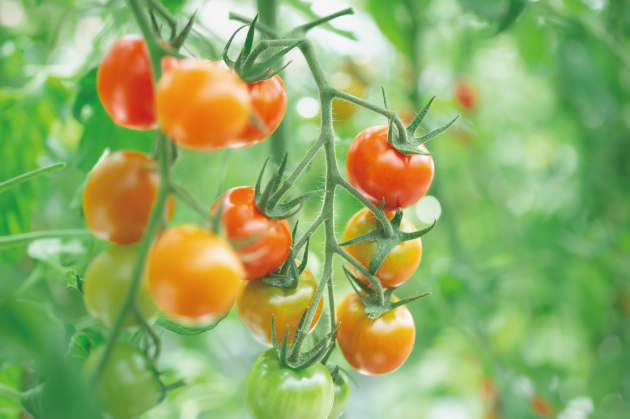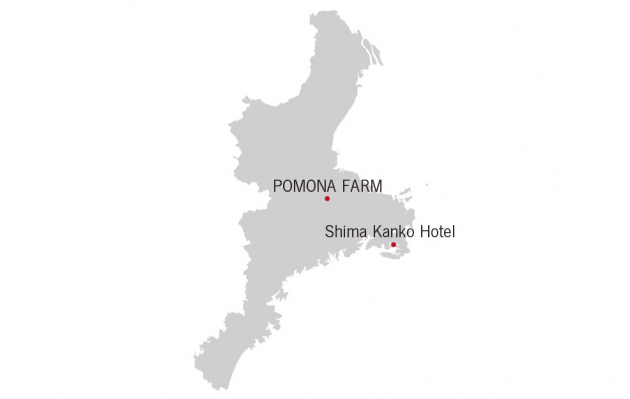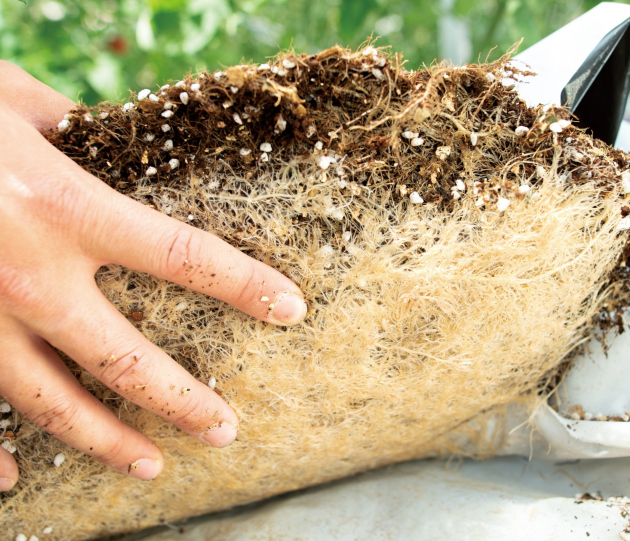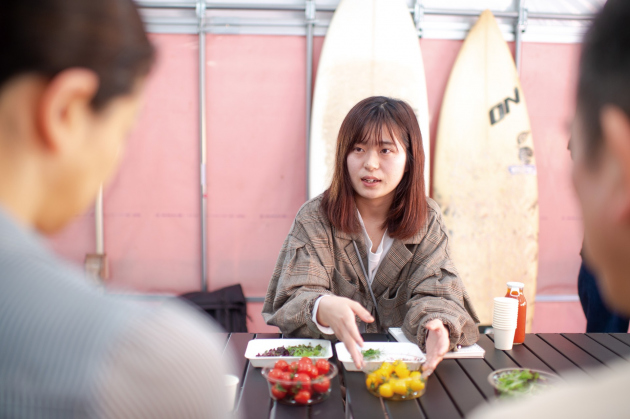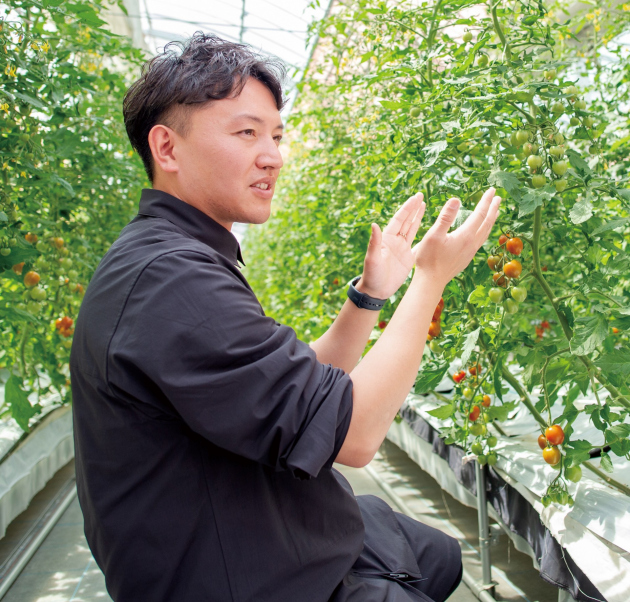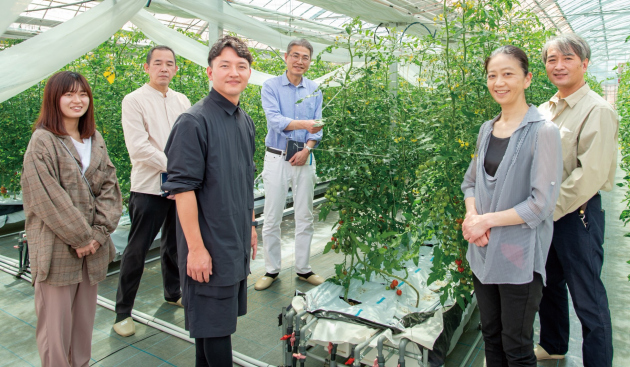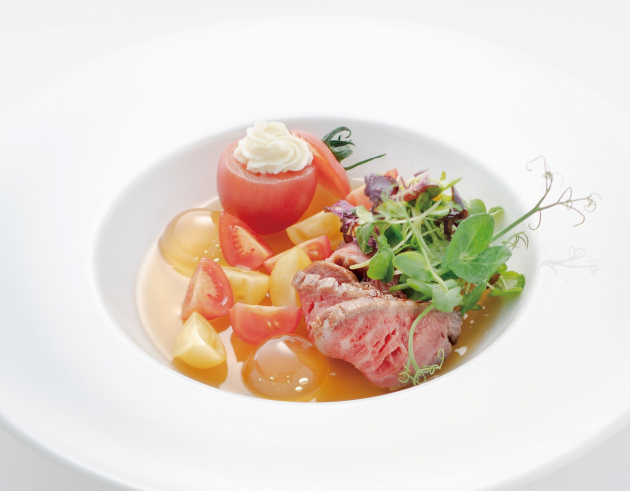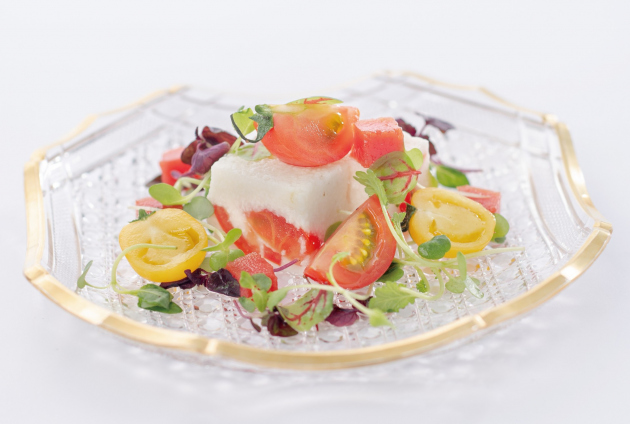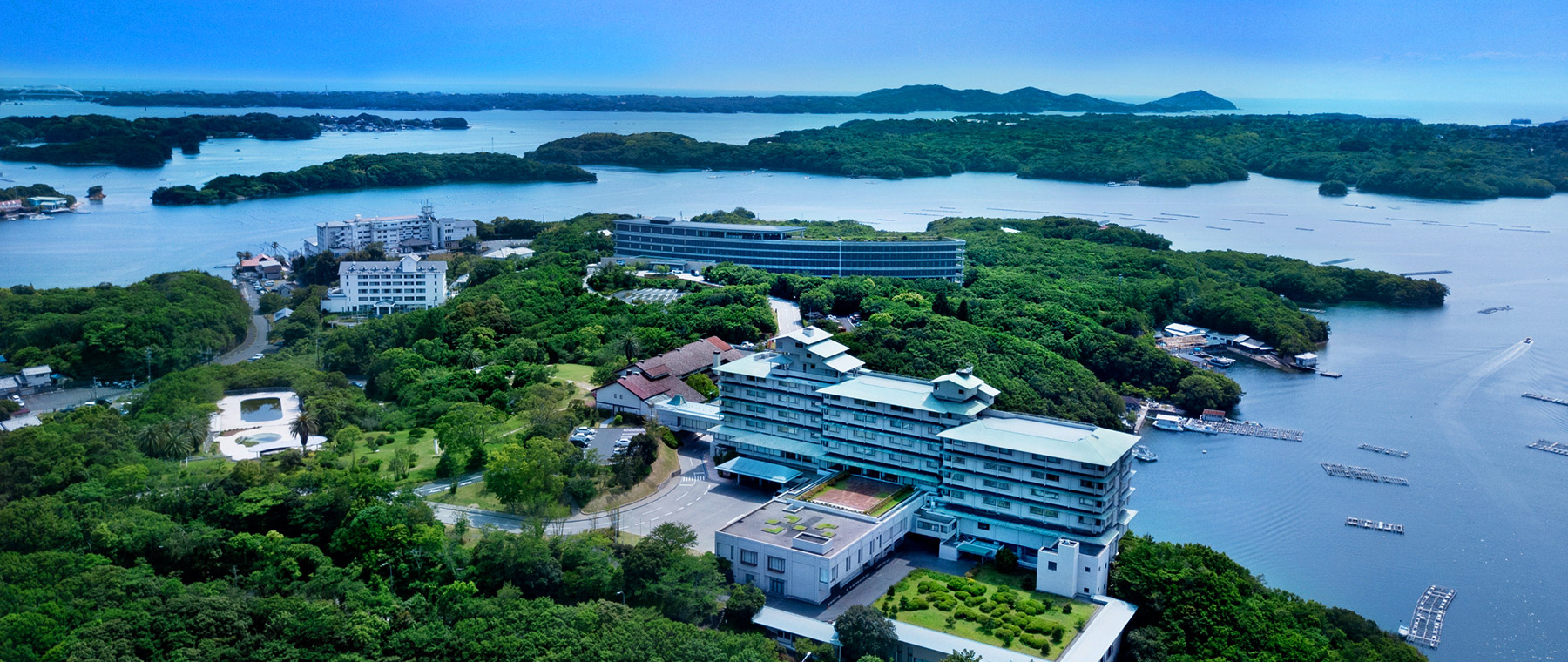A Revolution in the Future of Food.
Shima Kanko Hotel’s seasonal magazine "Shima Time" introduces the four seasons of Ise-Shima through the local culture, rich nature, and food.
Understanding the past, envisioning the future
From Shima Time Summer 2023 Issue
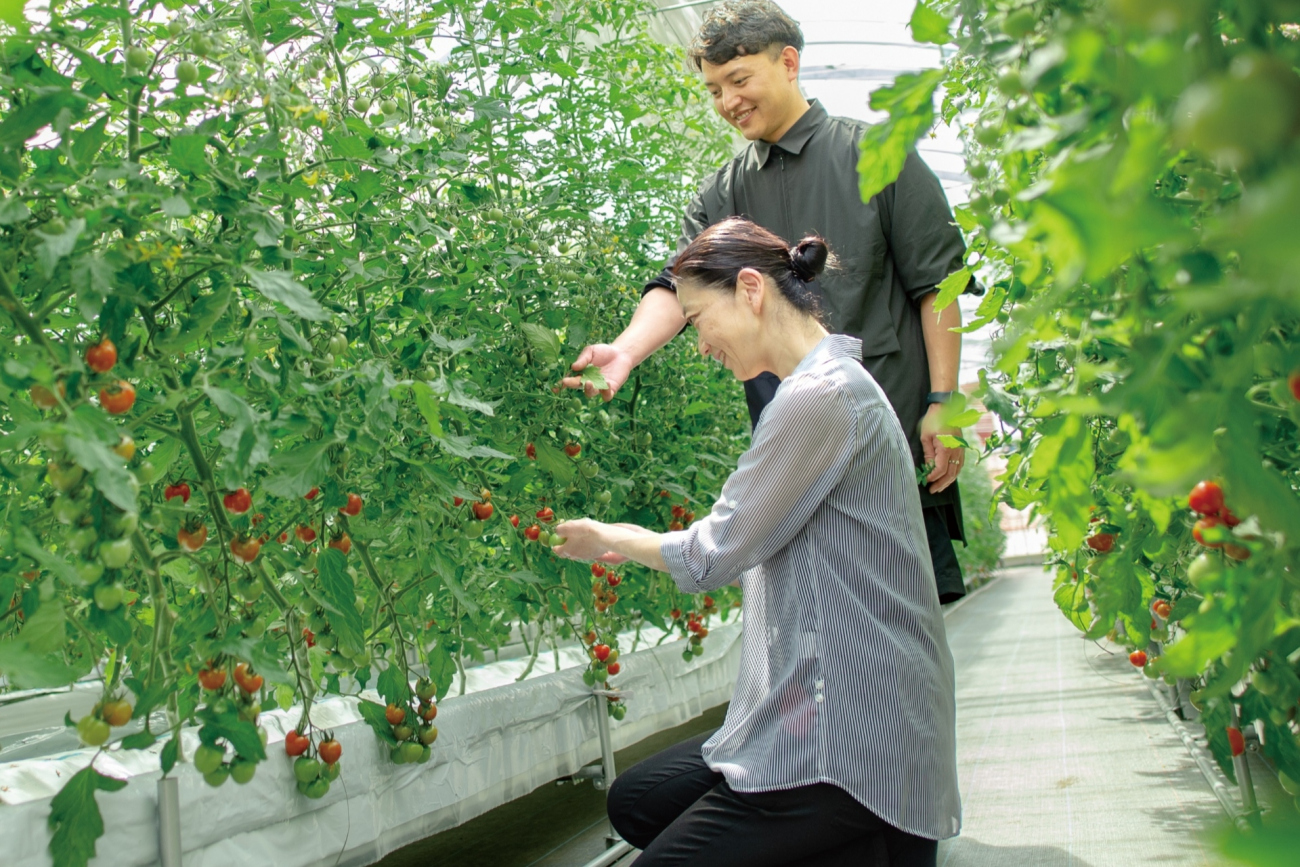
Executive Chef Higuchi and CEO Shohei Toyonaga holding tomatoes grown at Pomona Farm
During the Edo period, the Niu district of Taki Town, Taki County, developed as a farming village with the development of the Tachibaiyousui Irrigation Canal, which is registered as a World Heritage Irrigation Structure.
The name "Taki" is said to originate from the ancient term "Taki," signifying a land abundant in various ingredients and produce.
*Irrigation = Practice of artificially supplying water to agricultural land to nurture crops
Our discussion revealed Pomona Farm’s unwavering focus on "flavor" and dedicated efforts to shape the future of agriculture through innovative concepts and diverse technologies since their founding in 2017.
A New Farming Method Where Flavor Meets Sustainability.
In the farm's greenhouse, vegetables are cultivated using a method known as "Moisculture," which involves growing crops in a humid environment (wet culture).
This cultivation technology is developed by the agritech startup "CULTIVERA," for which Toyonaga serves as representative.
"Moisculture" is a cultivation method that focuses on the "roots" through which vegetables absorb nutrients. It involves controlling humidity within spaces created by special artificial cultivation sheets made of unique fibers, using vaporized water to facilitate root growth.
When you see the fibers during the cultivation process, you can feel the strength of the densely spread roots.“We’re using technology to create crop roots that farmers aim for,” says Toyonaga.
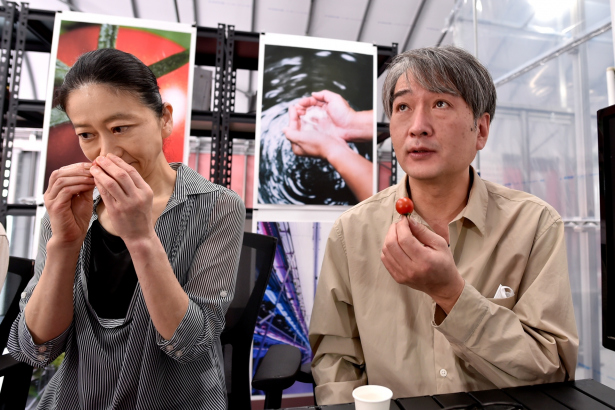
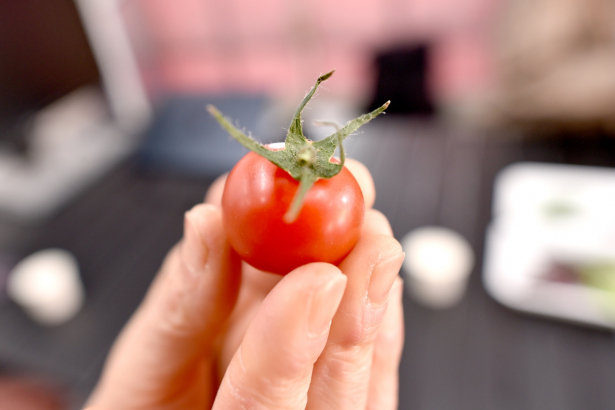
"It's jam-packed with sourness, sweetness, and umami," remarks Head Chef Kurino as they tasted the tomatoes.
We asked Toyonaga why he utilizes Moisculture.
“What we’re doing here is forward-looking agriculture.In today's world, climate change is causing water shortages, salt damage, and other factors that reduce the amount of soil available for growing crops, and the cost of fertilizers and energy is also rising.On top of that, the number of people in agriculture has continued to decline relative to the population.
As a solution to these challenges, for instance, when cultivating tomatoes using Moisculture, only about 10% of the water used in soil cultivation is needed, there is zero wastewater, and energy for heating and cooling can be provided by solar power.
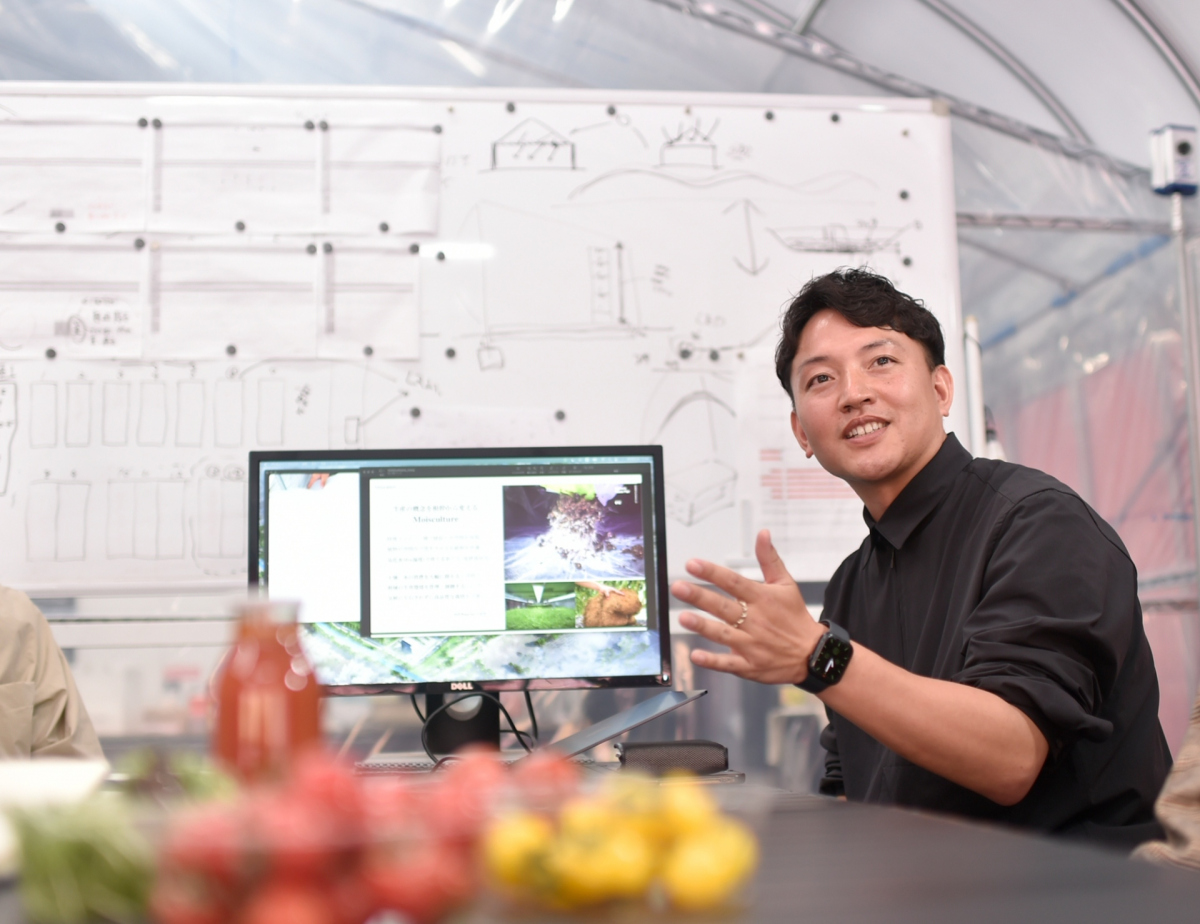
The Power of Chasing Dreams Sustains Agriculture
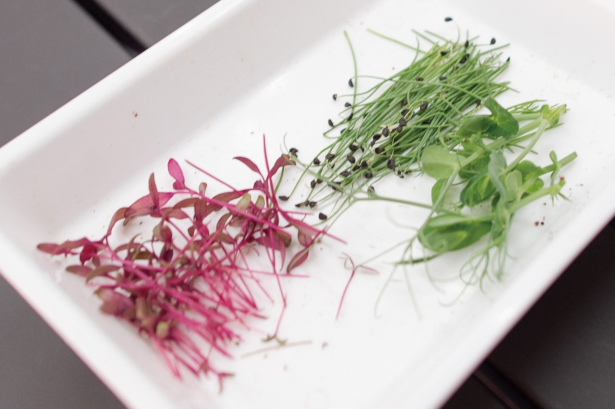
Microgreens grown with seawater
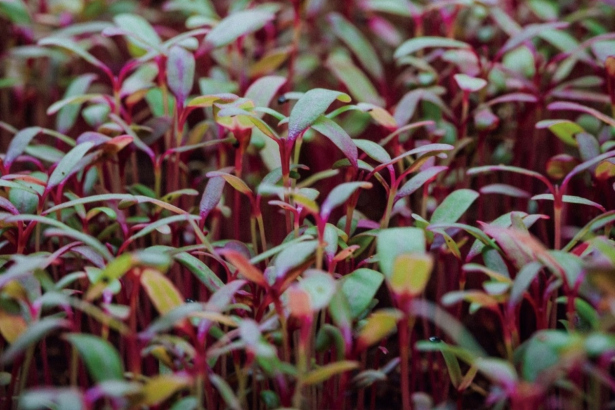
According to the startup, plants have preserved their DNA over approximately 200 million years by taking root in the ground and adapting to the environment.
We interviewed Miru Nakayama from the Recycling-Oriented Agriculture Promotion Department, who is in charge of production.
“The origin of successfully cultivated microgreens like amaranth lies in coastal regions.We were able to grow it by taking advantage of the DNA that made it able to withstand seawater, but plants like shiso (perilla), which are native to mountains, lose their flavor and develop a strong bitterness, making them unsuitable for cultivation.”
If it can be grown with seawater, it can be grown on the sea.We're not only adopting new farming methods, but also advancing research and production with a team of young staff members who hold a vision for the future,” he explained about his future outlook.
After studying agriculture at a local high school and joining Pomona Farm, Nakayama, who is now in charge of microgreens cultivation, shares that they find the role fulfilling.
“In the future, my goal is to make Taki famous for its cuisine through recycling-oriented agriculture that uses resources like biomass.Each of the staff working here has their own dream, and the common theme is agriculture.”
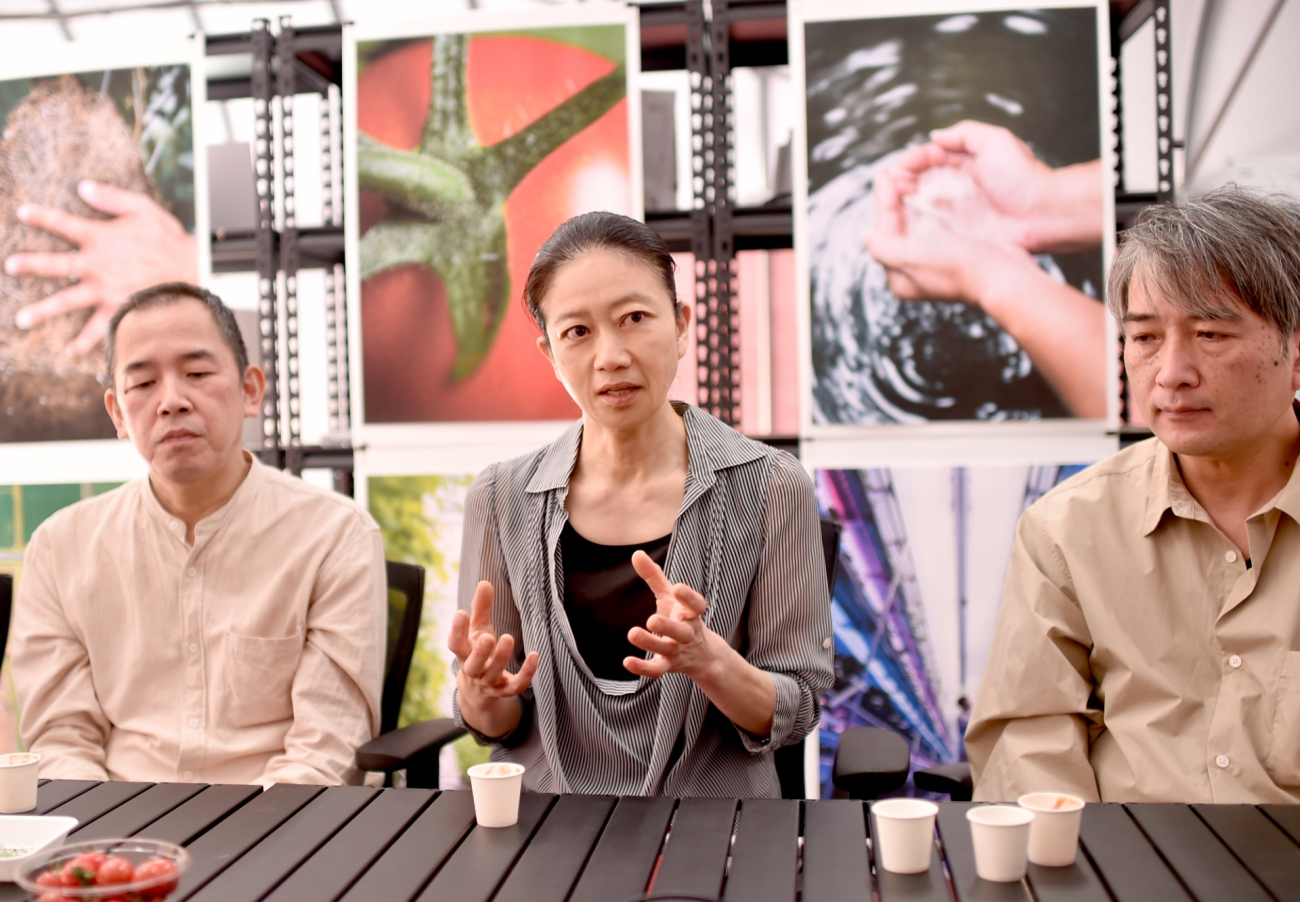
Japanese Executive Chef Tsukahara says, "We've heard stories about people who have been producing wonderful ingredients locally for years but have had to stop due to changes in the environment or a lack of successors.” Toyonaga responds, “For instance, by shifting the production of local specialties to Moisculture, I think we could stabilize both the quantity and quality, leading to sustainable cultivation and employment.
We’re currently working with the local Oka High School to grow Ise yam, and we’re also trying to produce chili peppers that can be used for vegetable broth as a substitute for seaweed and other marine resources.
People usually associate agriculture with hard and demanding work, but if we can adopt new perspectives and techniques and change the mindset, I think it can become a more appealing profession.”
Understanding the past, envisioning the future
We asked Toyonaga why he decided to pursue agriculture.
“I majored in archeology at university and did research in Cambodia.While researching the ruins, I learned that one of the reasons for the decline of civilizations was food shortages caused by changes in the climate.That is the catalyst for human conflict to begin and civilizations to perish.When I thought about the present and future of climate change, I came to the realization that what we need now is sustainable agriculture on a global scale.”
Toyonaga also talked about his thoughts on the future.“Most of the breadbaskets that supported ancient civilizations were located on what’s called the ley line, along the 34°30′ north latitude line, where there was ample sunlight and geographical advantages.
In fact, Pomona Farm was also built on this ley line.But, in the first year of opening, we could hardly harvest due to flood damage caused by heavy rain.I was stunned by this situation, since it should have been a place suitable for agriculture, not a tropical area.
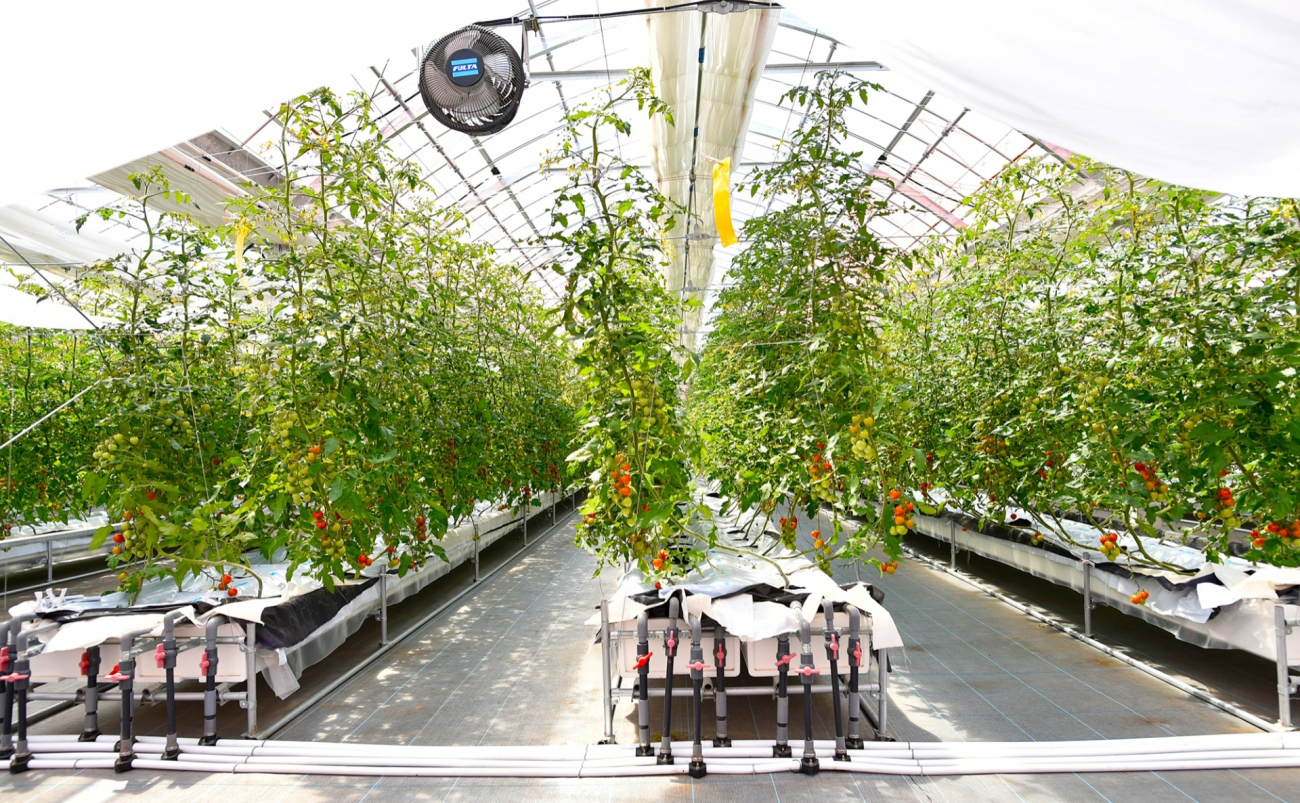
Executive Chef Higuchi says, "By studying the past and facing the future, new ideas are born. I've been particular about using local ingredients so far, but that alone isn’t sustainable. It was a great learning experience to gain some insight into the future of agriculture. It's a perspective that we chefs need as well."
The earnest consideration for the planet and the passion to create "delicious" vegetables are beginning to steer the future of "food" towards a brighter direction.
| Executive Chef Hiroe Higuchi | Became Executive Chef at Shima Kanko Hotel in 2014 and took charge of the working dinner at the G7 Japan 2016 Ise-Shima Summit. 2017 Bronze Award Winner of 8th Annual Forestry and Fisheries Cooking Prize for "Cooking Masters" by Ministry of Agriculture. Received the Chevalier Award for the Order of Agricultural Merit in France in 2023. |
|---|---|
| Japanese Executive Chef Kyoji Tsukahara | Refined skills at Miyako Hotel Osaka (now Sheraton Miyako Hotel Osaka) at Japanese restaurants "Miyako" and "Uemachi" from 1987. Involved in serving Japanese cuisine at the G7 Japan 2016 Ise-Shima Summit. Became Executive Chef of Japanese cuisine at Shima Kanko Hotel in 2019. |
| Chef Sommelier Masahiko Sugihara | Award winner in numerous competitions, including Semi-Finalist in the 2011 All-Japan Best Sommelier Competition. Served as Beverage Service Manager and Member of the Japanese Wine Selection Committee for the Ise-Shima Summit. JSA Sommelier Excellence |
| Head Chef Masaya Kurino of Bar Lien & Restaurant Yamabuki | Became Head Chef of Shima Kanko Hotel Teppanyaki Restaurant Yamabuki in 2020. Offers teppanyaki with interactive conversations and a live cooking show, drawing on extensive experience. |
Summer Dish Delivered by Executive Chef - Hiroe Higuchi's Cooking Story
Tomatoes, Microgreens, Matsusaka Beef
I blended the strong character of ingredients like tomatoes and microgreens from Pomona Farm, where they practice forward-looking agriculture, with Matsusaka beef raised in the neighboring town of Taki, and wasabi from Odai, a town adjacent to Taki.
Expression of the natural cycle on a plate. This dish embodies the wish for a lasting and thriving environment.
It is planned to be included in the "Degustation" course from June to August.
*May not be available depending on shipment conditions.
| French Restaurant "La Mer" | The Bay Suites 5F Dinner 17:30 - 21:00 (L.O. 19:30) *Some changes are currently in effect for our business hours |
|---|
Summer Dish Delivered by Japanese Executive Chef - Kyoji Tsukahara’s Cooking Story
Tomato Yoro Tofu
When I heard that Pomona Farm was working with a local high school to grow Ise yam, I found it inspiring that young people were actively engaging in agriculture.With that in mind, I made summer-like yoro tofu by combining tomatoes grown on the farm with Ise yam, a Japanese yam grown in Taki.
Yoro tofu is known as a nutritious dish, characterized by the smooth texture and gentle flavor of Japanese yam.
Fresh tomatoes, diced tomato juice jelly, and microgreens are also added around the yoro tofu to add vibrancy.It is a simple yet impactful dish where the flavors of the ingredients shine through.
It is planned to be included in the "Umashikuni Kaiseki" course from June to August.
*May not be available depending on shipment conditions.
| Japanese Restaurant "Hamayu" | The Bay Suites 4F Dinner 17:30 - 21:00 (L.O. 19:30) *Some changes are currently in effect for our business hours |
|---|
Back to a list of feature stories
Shima Kanko Hotel’s Seasonal Magazine "Shima Time"
Alongside these changing seasons, the seasonal magazine "Shima Time" introduces the four seasons of Ise-Shima through the local culture, rich nature, and more.

